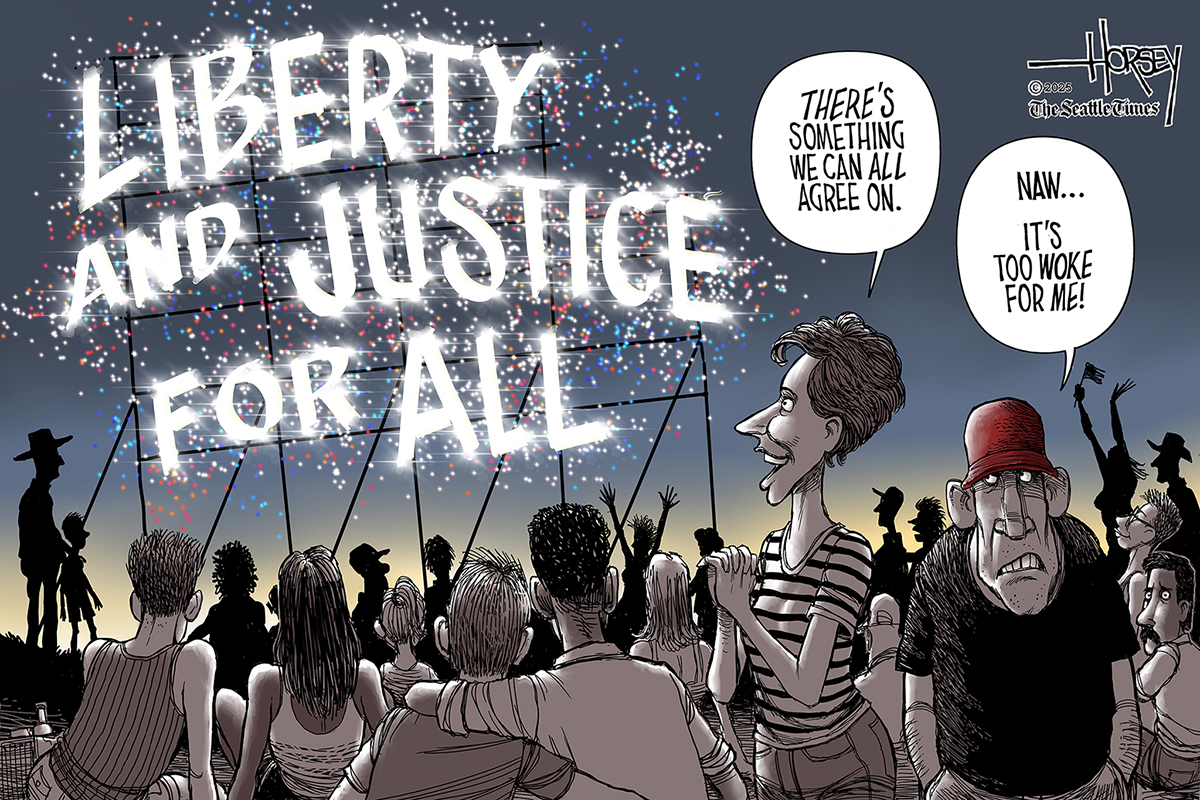
July 1 Political Cartoons: Satire Ignites Debates on Citizenship and Division
As the United States approaches Independence Day, editorial cartoonists deliver biting commentary on 2025’s most polarizing issues. From birthright citizenship debates to Democratic Party infighting, artists like Christopher Weyant and Bill Bramhall use humor to dissect America’s cultural and political fissures.
Birthright Citizenship Hanging by a Thread
The future of birthright citizenship in the United States emerges as a recurring theme in July 1st cartoons, with artists portraying the constitutional right as a fraying rope or a crumbling pillar. The New York Daily News’ Bill Bramhall depicts the 14th Amendment’s citizenship clause as a fragile lifeline, symbolizing escalating political efforts to reinterpret or revoke automatic citizenship for children born on U.S. soil. Another cartoon by Gary Varvel shows a nervous Uncle Sam snipping the thread of birthright citizenship with oversized scissors labeled “Partisan Agendas,” reflecting the contentious legislative proposals gaining traction in Congress.
These visual metaphors tap into a heated national debate. Recent polls indicate that 42% of Americans now support stricter citizenship requirements, a shift attributed to polarized rhetoric around immigration and national identity. Cartoonists amplify concerns about the potential erosion of constitutional norms, with Henry Payne illustrating birthright citizenship as a shield cracking under the weight of political brinkmanship. The imagery underscores the high stakes of a debate that could redefine American inclusivity.
Democratic Party Factions Exposed
Christopher Weyant’s editorial cartoons zero in on the Democratic Party’s internal divisions, portraying progressive and moderate wings as rival factions tug-of-warring over the party’s soul. One cartoon shows President Harris struggling to balance on a seesaw labeled “Unity,” with progressive lawmakers demanding sweeping reforms on one end and centrist figures urging caution on the other. The artwork mirrors real-world tensions, such as clashes over climate policy and healthcare expansion, which have stalled legislative progress ahead of the midterms.
Bob Gorrell adds to the narrative with a caricature of Democratic leaders navigating a sinking lifeboat labeled “2025 Strategy,” while activists and lawmakers toss conflicting priorities overboard. The satire critiques the party’s struggle to align its base’s demands with electoral pragmatism. Such cartoons not only highlight policy rifts but also question whether the party can present a cohesive front against a resurgent GOP.
Satire and Symbolism: Statue of Liberty’s New Slogan
The Statue of Liberty, a enduring symbol of American ideals, gets a darkly comic makeover in several cartoons. Michael Ramirez reimagines Lady Liberty holding a tablet inscribed with the phrase “Entry Permits Sold Separately,” lampooning policies that critics argue betray the statue’s original message. Steve Breen takes a sharper tone, depicting the monument wearing a blindfold and shackles—a nod to debates over immigration enforcement and border security.
Meanwhile, the term “woke fireworks” trends in cartoons critiquing cultural battles over patriotism. A piece by Al Goodwyn shows fireworks exploding into symbols like gender flags and book bans, satirizing how Fourth of July celebrations have become a proxy war for ideological divides. These works reflect a nation grappling with competing visions of identity, freedom, and collective memory.
Cartoonists as Cultural Mirror
Editorial cartoonists like Joe Heller and John Deering use absurdity to distill complex issues. Heller’s July 1 cartoon features a family picnic interrupted by a thunderstorm labeled “Political Chaos,” with storm clouds shaped like Trump, Biden, and Harris—a reminder that even summer escapes are overshadowed by election-year drama. Deering’s contribution, published in the Brooklyn Eagle, portrays Capitol Hill as a circus tent, with lawmakers as clowns juggling scandals and soundbites instead of legislation.
These artists exemplify the dual role of political cartoons: to entertain and provoke. By exaggerating flaws and spotlighting hypocrisies, they challenge audiences to confront uncomfortable truths. As David Horsey’s Tribune Content Agency cartoon warns, “Laughter today, accountability tomorrow.”
Key Takeaways
- Birthright citizenship debates dominate cartoons, symbolizing fears over eroding constitutional rights.
- Democratic Party infighting satirized as a threat to electoral cohesion and policy momentum.
- The Statue of Liberty’s evolving imagery critiques immigration and cultural polarization.
- “Woke fireworks” caricatures highlight how patriotism has become a battleground for ideology.
- Editorial cartoons remain a vital lens for dissecting America’s political and social fractures.
